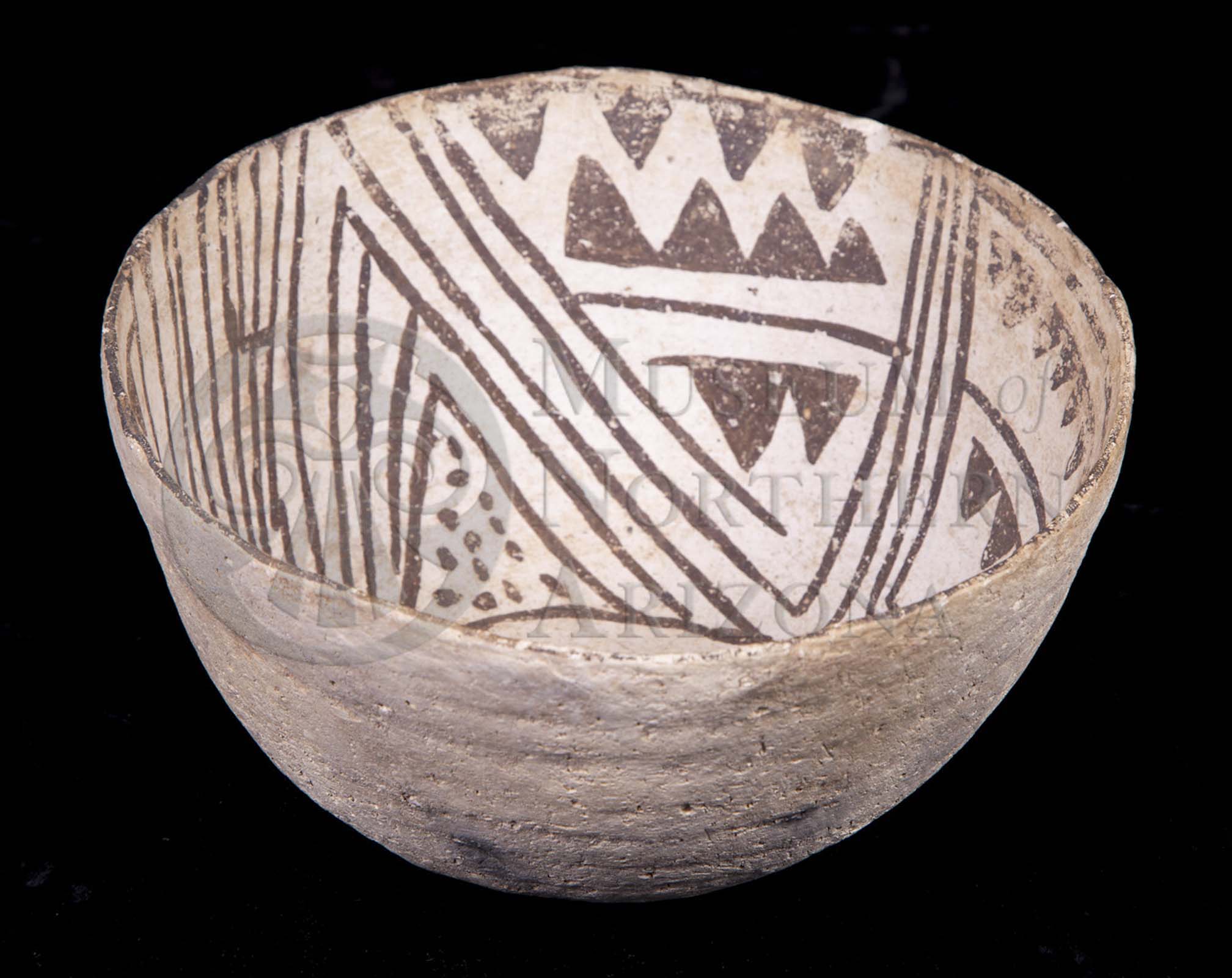
White Mound Black-on-white bowl from the Museum of Northern Arizona collections. Click the image to open the White Mound Black-on-white gallery.
White Mound Black-on-white is a relatively early type of Cibola White Ware that often includes sawtooth designs around the rims and nested chevrons in the main body.
Archaeological Culture: Ancestral Puebloan
Date Range: A.D. 700-850 or 900.
Construction: By coiling.
Firing: In a neutral to reducing atmosphere.
Core Color: Light gray.
Temper: Coarse quartz sand, possibly crushed sandstone.
Surface Finish: Rough or smoothed but gritty, not polished, not slipped, temper protruding. Exteriors are scraped and have conspicuous grooves and pits.
Surface Color: Buff through yellowish red.
Forms: Bowls, jars and effigies.
Decoration:
- Paint: Black to dark brown mineral paint.
- Pigments: Iron-based.
- Design: The most frequent motif consists of nested chevrons outlining solid triangles pendent from the rim. Other arrangements of solid triangles, as well as checkerboards and occasional bold cross-ticked lines (railroad tracks, barbed wire) are common. Designs tend to follow the rim rather than run from rim to center. Lines frequently over carry at intersections. Sullivan (1984:79) states: “Designs are executed in narrow width lines (generally 1-2mm) that are not elaborated. The banded design layout always contains solid design elements.” Human figures with solid bodies and small, simple appendages are an infrequent but regularly occurring element. They often hold hands, forming a band around the bowl interior. Sometimes bowl exteriors are decorated. A solid line is always painted directly on the rim.
Comparisons: Lino Black-on-gray has organic paint. Chapin and Piedra Black-on-whites have crushed rock temper (Piedra overlaps with later design styles.) La Plata Black-on-white is more sparsely decorated, lacks solid designs, and design units tend to proceed from rim to center. Kiatuthlanna designs overlap with the White Mound style, but Kiatuthlanna is polished, often slipped, and may have sherd temper; the temper in Kiatuthlanna does not protrude from the surface.
Compiled from the following sources:
Hays-Gilpin, Kelly and Eric van Hartseveldt. (1998) Prehistoric Ceramics of the Puerco Valley: The 1995 Chambers-Sanders Trust Land Ceramic Conference. Museum of Northern Arizona Ceramic Series, No.7. Flagstaff, Arizona.
Sullivan, Alan P. (1984) Design Styles and Cibola Whiteware: Examples from the Grasshopper Area, East Central Arizona. InRegional Analysis of Prehistoric Ceramic Variation: Contemporary Studies of the Cibola Whitewares, edited by A.P. Sullivan and J.L. Hantman. ASU Anthropological Research Papers 31. Arizona State University, Tempe.
Compiled by:
April Peters, Northern Arizona University Anthropology Laboratories.
